Introduction
A small bedroom can feel cozy and intimate—but also cramped and cluttered if not designed thoughtfully. With modern homes getting smaller, it’s important to make the most of every square foot. The good news? You don’t need a large room or a big budget to create a stylish and comfortable bedroom.
In this guide, we’ll share expert-approved tips and ideas to help you decorate a small bedroom in a way that feels bigger, brighter, and more functional. Whether you’re working with a narrow layout or limited natural light, these smart strategies will help you transform your space into a relaxing retreat.
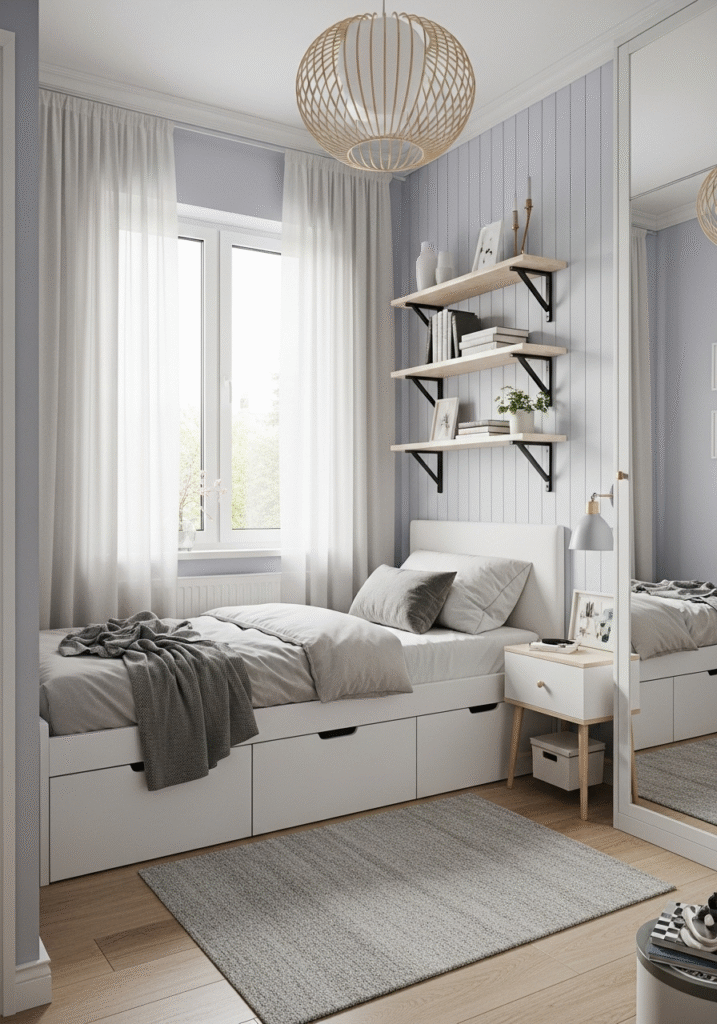
1. Assessing Your Space
Before you start shopping or rearranging furniture, take a moment to analyze your space. Look at the dimensions of the room, window placement, and existing furniture. Ask yourself:
- Where does the natural light enter from?
- Are there any unused corners?
- What’s taking up unnecessary space?
Use this information to plan your layout, colors, and storage needs. Measuring beforehand ensures that every item you choose fits well—both functionally and visually.
For a complete living room transformation, don’t forget to check out our stunning Wall Hanging Ideas for Living Room that pair perfectly with wall décor.
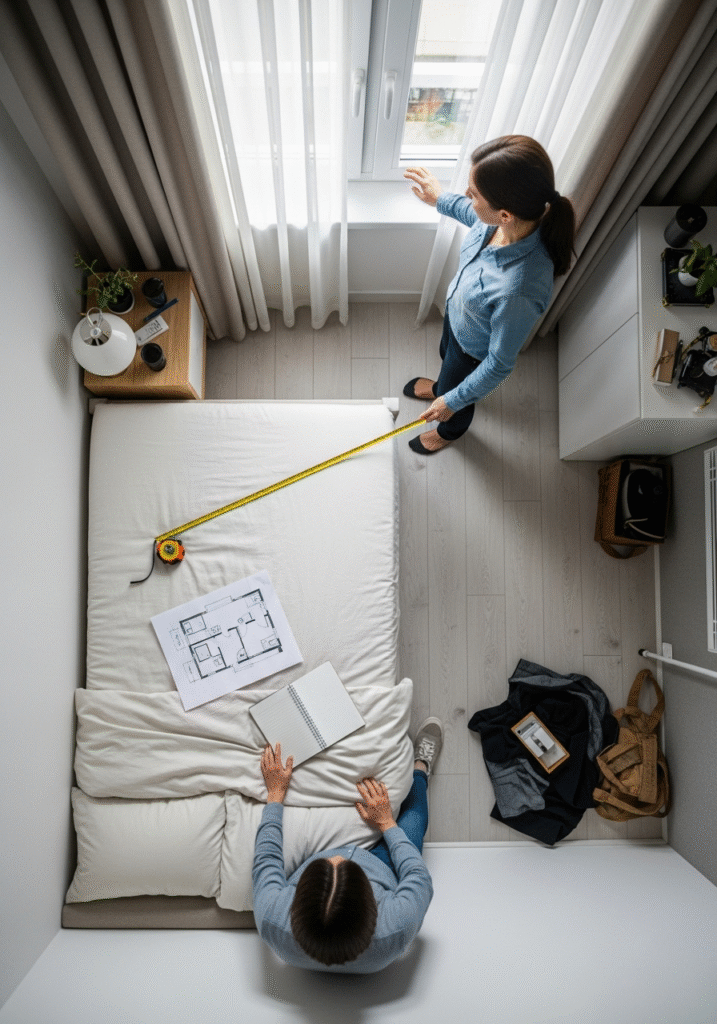
2. Choosing the Right Color Scheme
Color plays a huge role in how big or small a room feels. For small bedrooms, lighter shades are often best. They reflect light, making the space feel more open and airy. Here are some color tips:
- Go neutral: Shades like white, soft gray, beige, or pastels work wonders in small spaces.
- Monochrome magic: Using different shades of the same color can create a seamless look that visually expands the room.
- Accent wisely: Add bold or dark colors through decor (like throw pillows, lamps, or art), but keep walls light.
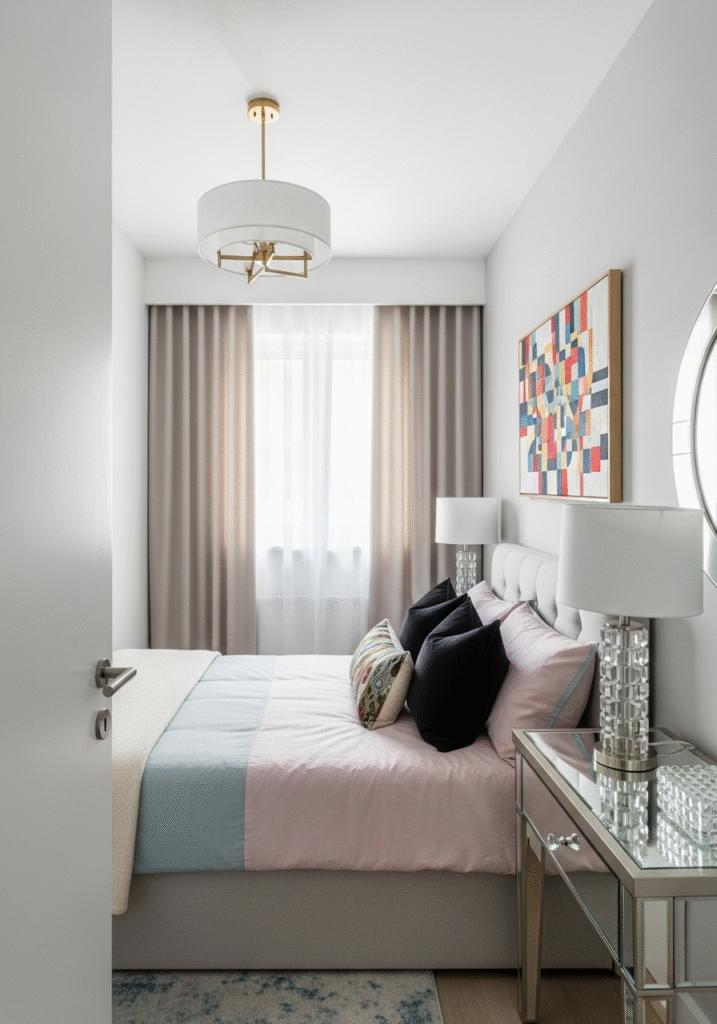
3. Furniture Tips for Small Bedrooms
Furniture can easily overwhelm a small room if not chosen carefully. Here are some smart strategies:
- Opt for low-profile furniture: Low beds and shorter headboards create the illusion of higher ceilings.
- Use multipurpose pieces: Think beds with built-in drawers, ottomans with hidden storage, or desks that double as nightstands.
- Go for floating furniture: Wall-mounted nightstands or shelves save floor space and make cleaning easier.
- Choose see-through items: Glass tables or acrylic chairs visually “disappear” and reduce cluttered looks.
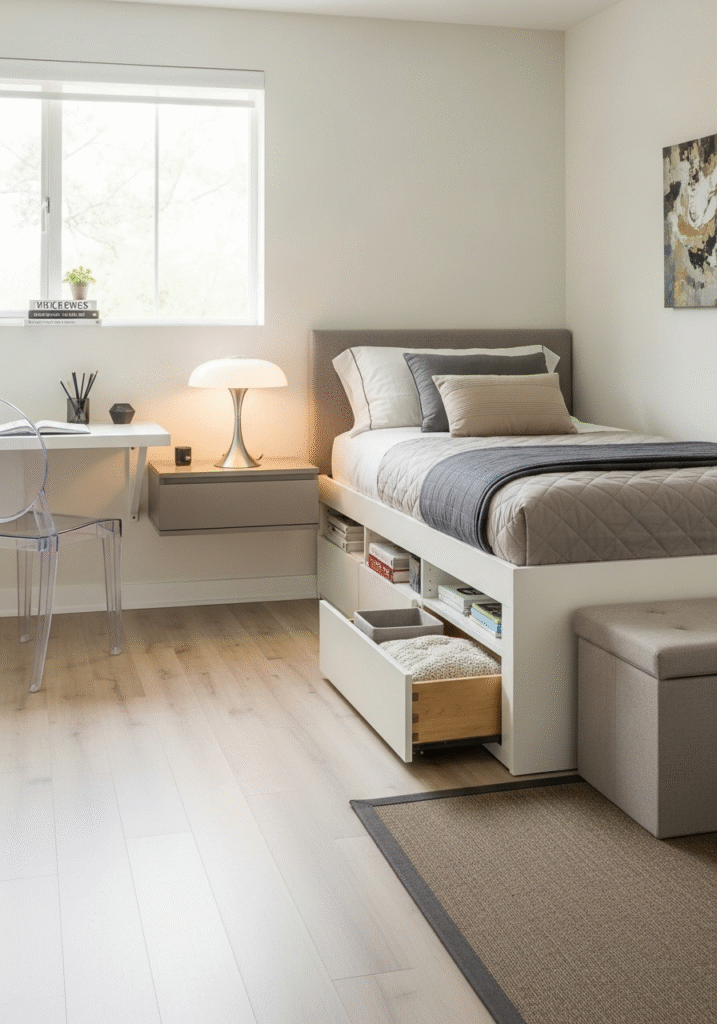
4. Smart Storage Solutions
Lack of space doesn’t mean you need to compromise on storage. Here’s how to store smartly in a small bedroom:
- Under-bed storage: Use storage boxes or roll-out drawers under the bed to store seasonal clothes, shoes, or books.
- Wall shelves: Take advantage of vertical space by installing floating shelves for decor, books, or essentials.
- Over-the-door organizers: Great for storing shoes, accessories, or beauty products without taking up floor space.
- Built-in wardrobes: If you’re renovating, custom-built wardrobes can be made to fit snugly from floor to ceiling.
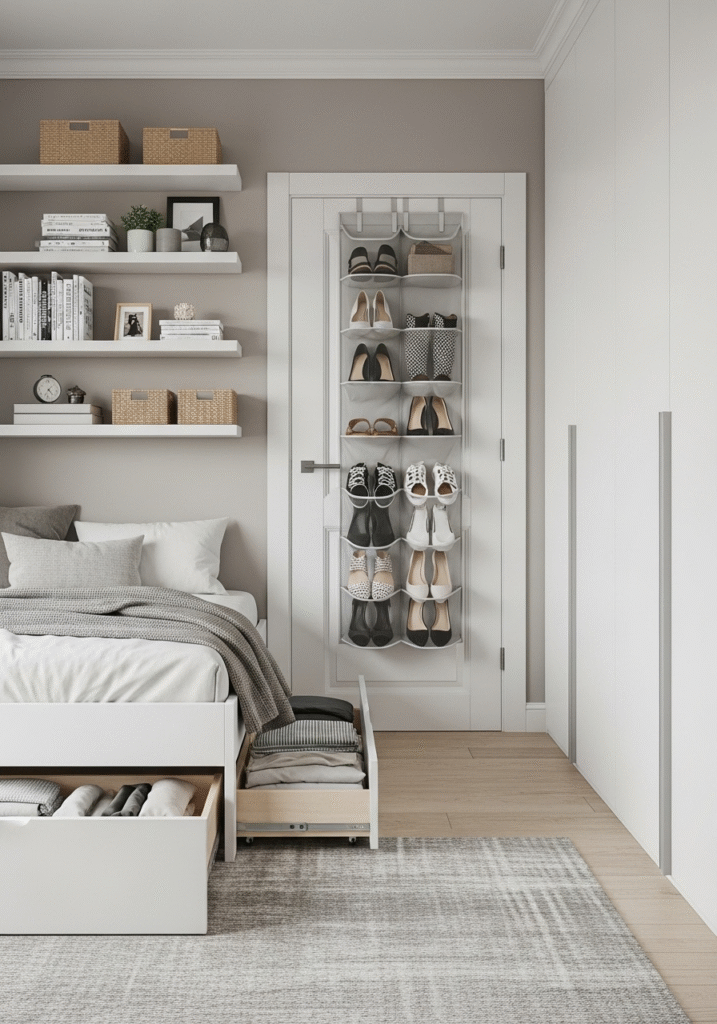
5. Lighting and Mirror Tricks
Lighting can dramatically change how a room looks and feels. Combine it with mirrors, and your small bedroom can feel twice its size.
- Use layered lighting: Combine overhead lights with bedside lamps and wall sconces for a cozy ambiance.
- Install pendant lights: Hanging lights free up table space while adding style.
- Place mirrors wisely: Mirrors opposite windows bounce light around the room. A large mirror can also create depth.
- Avoid bulky shades: Choose slim, minimal lighting fixtures to save visual space.
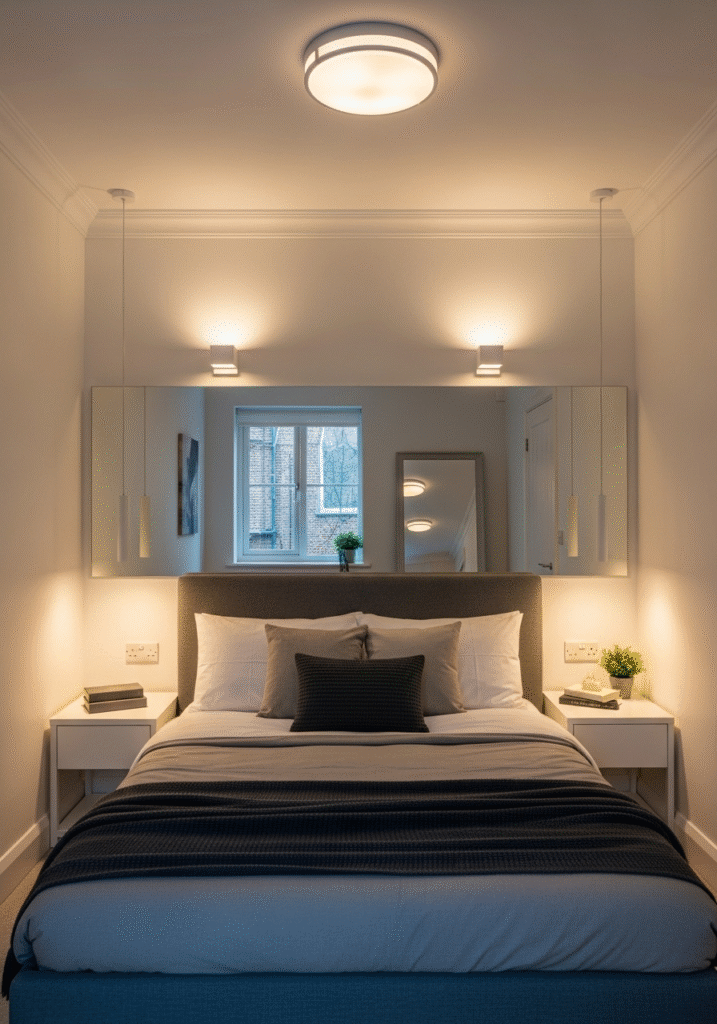
6. Wall Decor Ideas
Just because your room is small doesn’t mean it should be plain. Wall decor adds personality without taking up precious floor space.
- Create a gallery wall: Group small framed prints or photos above the bed or on a feature wall.
- Use wall decals or paint art: These are easy to install and remove—ideal for renters or temporary updates.
- Hang functional art: Pegboards, fabric organizers, or decorative hooks can be both pretty and practical.
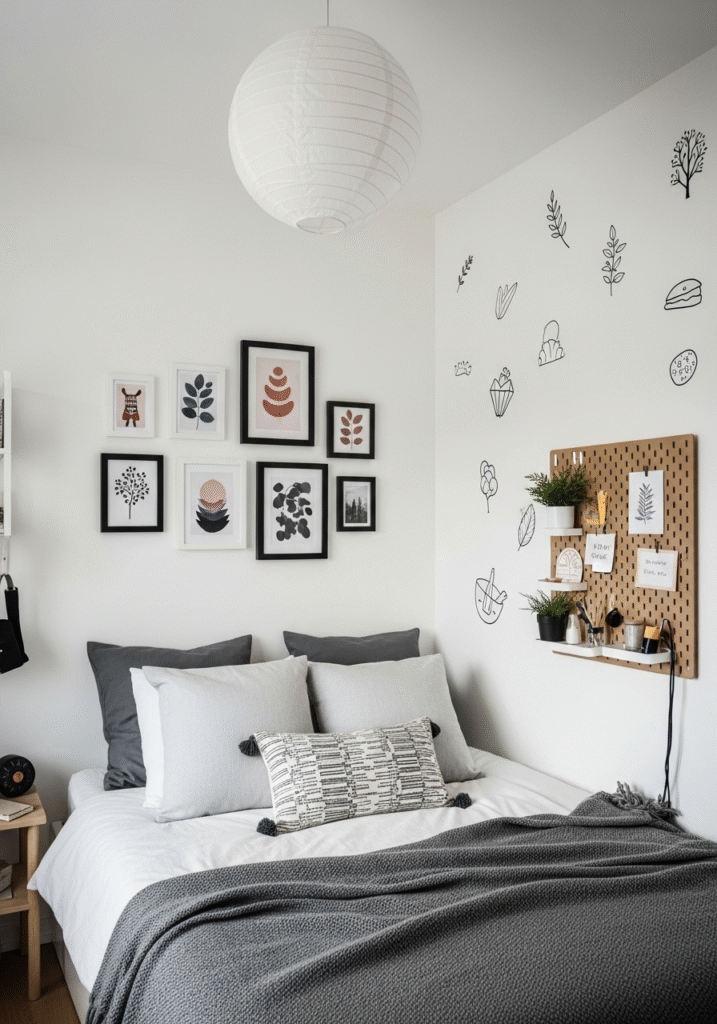
7. Functional Layout Tips
How you arrange your furniture can make or break a small bedroom. These layout strategies can help:
- Center the bed: Placing the bed in the center of the main wall allows for better balance and symmetry.
- Avoid blocking windows: Natural light is essential in small spaces. Keep it unobstructed.
- Leave walking space: Maintain at least 18–24 inches of walking room around key furniture pieces.
- Think diagonal: In very tight rooms, angling the bed slightly can create better flow and an interesting visual layout.
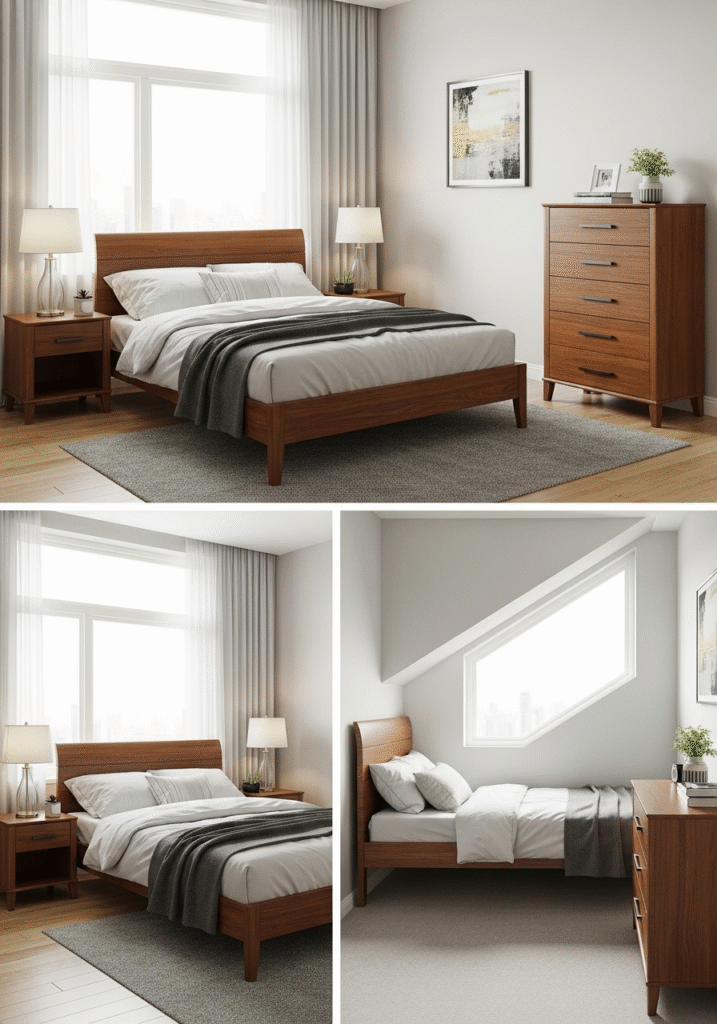
8. Budget-Friendly DIY Ideas
You don’t have to splurge on expensive decor. Some of the most charming elements come from DIY projects. Try these:
- Headboard hacks: Make a stylish headboard using wood planks, upholstered fabric, or even a tapestry.
- Wall art: Frame pages from magazines, your own photography, or abstract watercolor paintings.
- Crate shelves: Stack painted wooden crates to create a custom bookshelf or nightstand.
- Repaint old furniture: A coat of paint can completely transform outdated items.
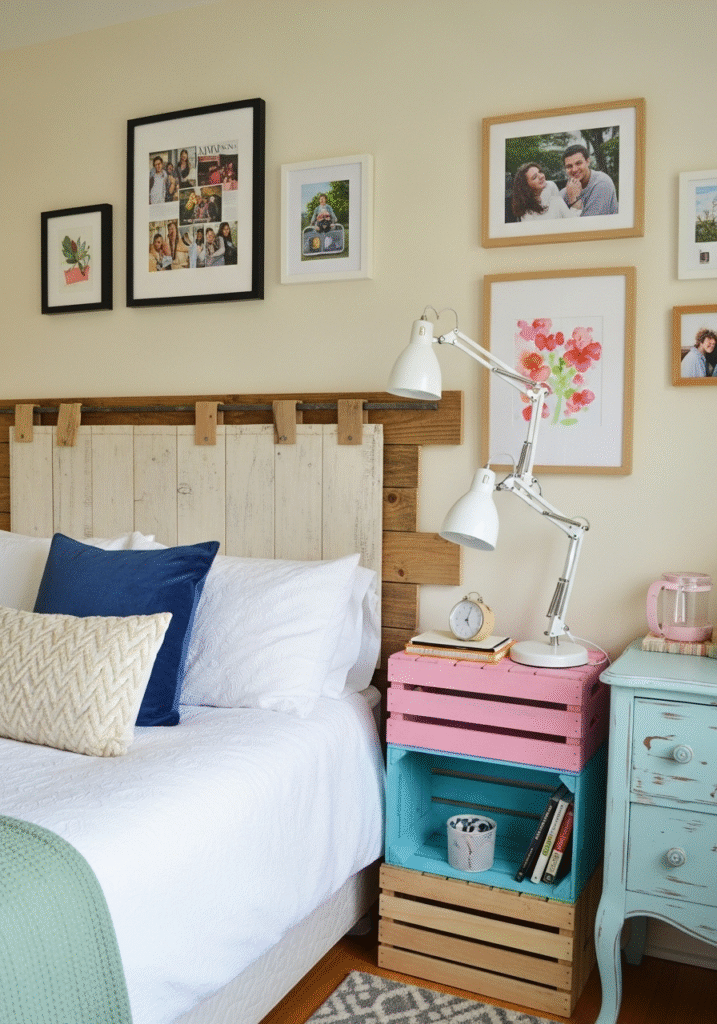
9. Common Mistakes to Avoid
To make your small bedroom decor successful, avoid these pitfalls:
- Overcrowding: More isn’t always better. Avoid too many furniture pieces or decorations.
- Ignoring scale: Don’t use oversized beds or lamps—they’ll shrink the room visually.
- No storage plan: Without smart storage, clutter builds up fast in small rooms.
- Poor lighting: Relying on a single overhead light makes the room feel flat and dull.
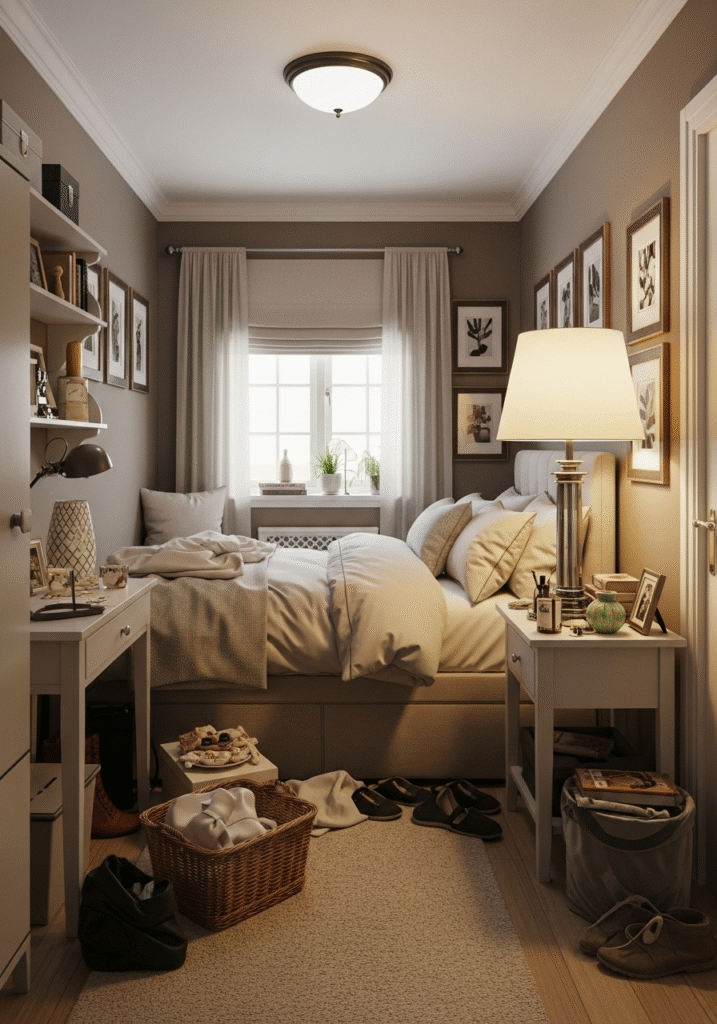
10. Final Thoughts
Decorating a small bedroom can feel like a challenge, but it’s also an opportunity to get creative and intentional with your space. With smart planning, multipurpose furniture, and a touch of DIY magic, you can turn even the tiniest room into a peaceful and functional sanctuary.
Remember, small doesn’t mean limited—it just means you have to be smarter about how you use space. Focus on comfort, keep it clutter-free, and add personal touches that make the room feel like home.
So grab a tape measure, get inspired, and start transforming your small bedroom into a stylish haven that reflects your personality and fits your lifestyle.
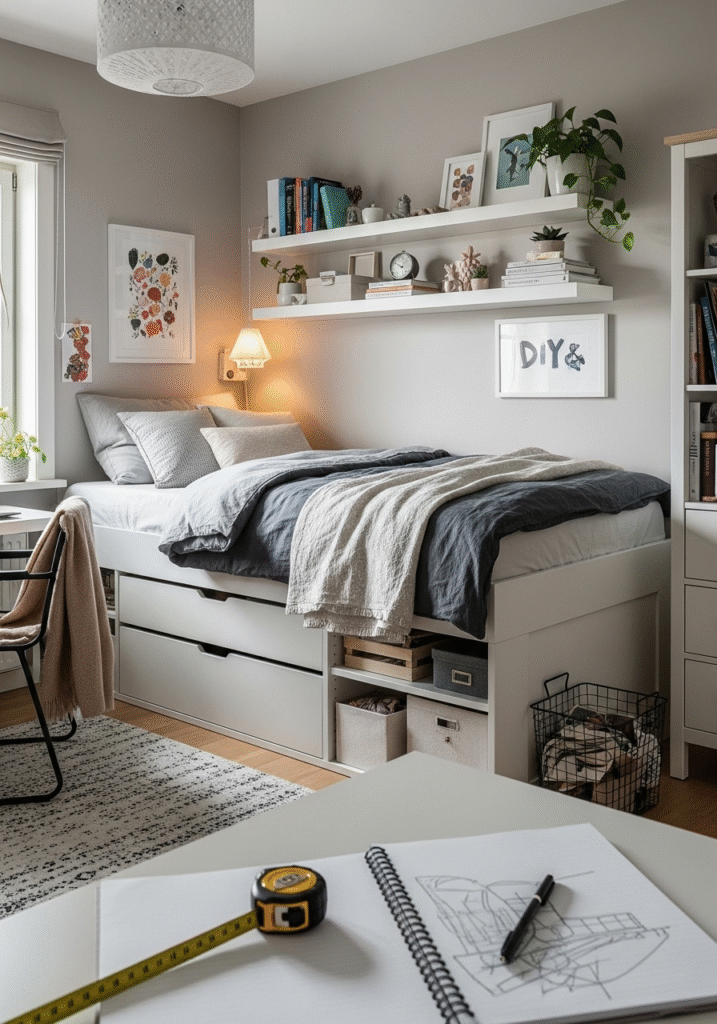

Pingback: 25+ Stylish Wall Hanging Ideas for Your Living Room (Budget to Luxury) - pademoluxury.com